
In 1947, Wilhelm Reich MD published The Cancer Biopathy, detailing his research in visualizing and applying Orgone Energy. In this work, he described a device which he called the Orgone Field Meter which responded to living things as they were brought close to the device. The Experimental Life Energy Meter, developed by Heliognosis, is based on the same principle as Reichs device and has been made into a small hand-held or bench-top unit.
The meter is provided with a built-in small flat plate electrode located under the blue square above the meter. This internal electrode may be used for measuring liquid containers and small objects by conveniently placing the test object on the center of the blue square. Humans, animals and plants may also be measured by bringing them in contact with the blue square. Alternatively, a tube electrode included in the package may also be used.
Many external eclectrodes have been developed over the years for different applications and descriptions of these can be found further down this page. To list a few of the applications of the LM4:
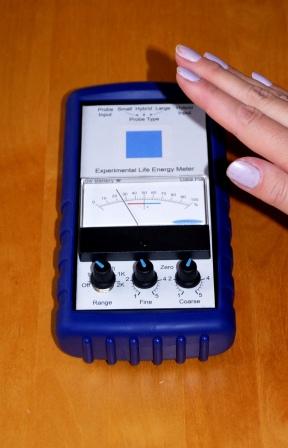
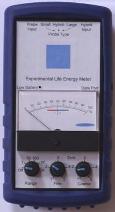
The
LM4 is provided
with an internal flat plate electrode (blue square) for general purpose
use. An included glass tube sensor can also be plugged in the top and
may be rotated for various types of measurements. For most
measurements, the test object may be brought up to the blue square and
a reading taken either in contact or at a fixed distance. The reading
will decrease as the object is moved further away. For consistent
readings, always place objects for comparison at exactly the same
distance or position to the electrode. For larger distances, the range
switch may be moved to a higher position to increase sensitivity. To
determine the correct range for measurement, first zero the meter on
the x1 range using the coarse and fine zero controls without any
objects near the electrode. Bring the object to the desired distance
and observe the meter deflection. If the deflection is less than 10%
repeat this procedure. If small differences between objects is to be
observed, set the range to x10 and set the zero to mid-scale (on the
-/+ line) while measuring the reference object. Replace with the test
object and observe the difference on the meter. Decrease or increase
the range switch to see larger or smaller energy differences.
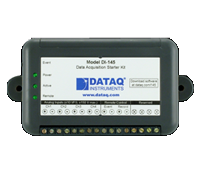
The LM4 output jack provides an analog voltage that follows the needle movement of the LM4 display. An included cable can be used to connect the output signal to a computer via a data aquisition system such as our LM05AC based on the dataq system. The software package supplied with the LM05AC allows for logging and graphing the LM4 readings for real time viewing on a PC. The data can be recorded and viewed with the included app or converted to a spreadsheet compatible .csv file for use with Microsoft Excel or similar.
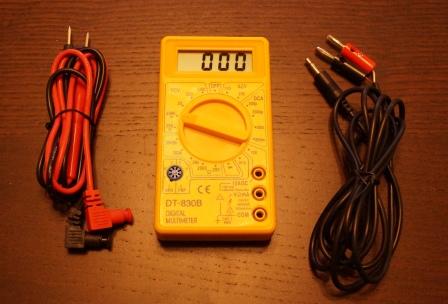
The Digital Display Meter (DDM) connects to the data port of the LM4 using the included cable. The DDM provides increased accuracy and sensitivity . The 6ft (190cm) extension cable allows for convenient placement of the display for optimal viewing. The DDM also has multimeter functions such as volts, ohms and continuity.
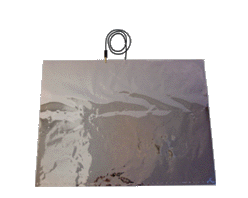
The Large Plate Electrode is a flexible flat sheet electrode with a vinyl top and bottom protective surface. The electrode measures 15" x 20" x 0.05" (38cm x 51cm x 1mm). This electrode is ideal for whole body measurements, animal measurements or testing anything too large for the blue square electrode. The large plate electrode has a high sensitivity and allows for energy field detection up to 6ft (190cm).
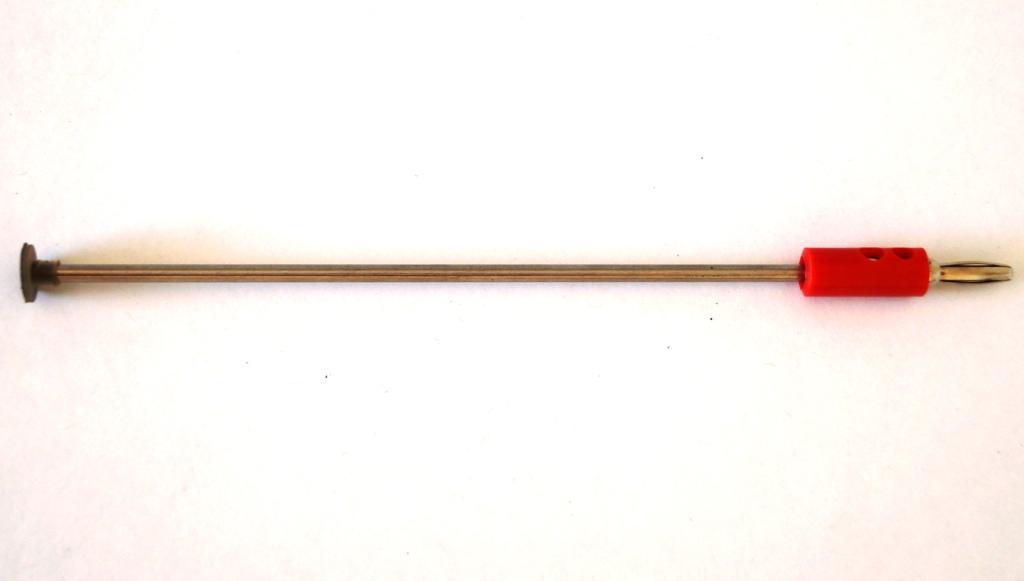
The accuprobe fits directly into the external probe connector of the LM4. Its small diameter (3mm) sensing surface allows for locating and evaluating accupuncture points. Watch the video here for more information.
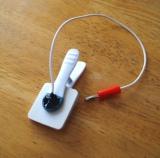
The Plant probe was developed to make measurements of Live plant leaves less intrusive and more convenient. The electrode clamps lightly to a leaf of the desired plant and the 12' (30cm) lead plugs into the external probe port of the LM4. The electrode surface is 1.5"x1.5" (40mm x 40mm) .
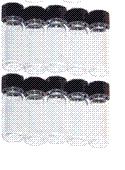
These convenient 2 dram ( about 8mL) vials with caps are a convenient way to test your water and fluid samples directly on our range of small electrodes and filters. The vials are made of laboratory quality glass with polycarbonate screw tight leak proof caps.
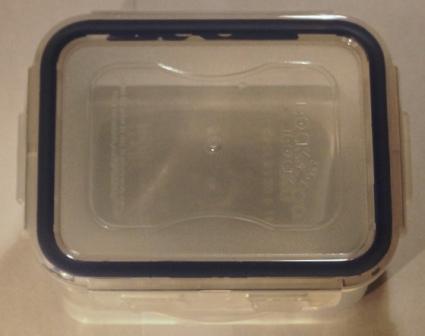
This compact amplifying filter is designed to fit directly on the blue square electrode. The filter enhances the readings of living and energetically alive objects while reducing the readings from non-living, metalic and conductive objects. This filter provides a quality factor of 108 compared to the LM4 alone at whose quality factor is five. Dimensions 4.25" x 3.5" x 1.75" (11cm x 9cm x 5cm)

The Amplifying Electrode is an external flat plate electrode for use with the LM4, LM3 or LM2 models. It uses the amplifying filter technology to enhance the readings from living and energetically alive objects while reducing the readings from non-living, metalic and conductive objects. This filter provides a quality factor of 125 compared to the LM4 alone at whose quality factor is five. Dimensions 6" x 6" x 1.75" (15cm x 15cm x 5cm)
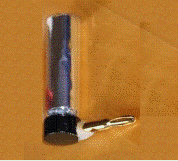
This is the standard tube external electrode provided with the LM4 package. The tube electrode is a general purpose type and can be grasped with the hand, inverted for insertion into liquids or used for ambient and environmental energy level testing. The tube electrode is sealed borosilicate glass with dimensions of 2.5" tall and 5/8" diameter (65mm tall x 17mm diameter).

A 1.5" square galvanized iron plate mounted on an attractive wood platform. This probe is designed for general purpose measurement. It is especially well suited for measuring flat objects like plant leaves, fluid sample in flat bottom vessels, the palm of the hand, fruits and vegetables etc. The sensitivity of the small plate is about the same as the tube probe.